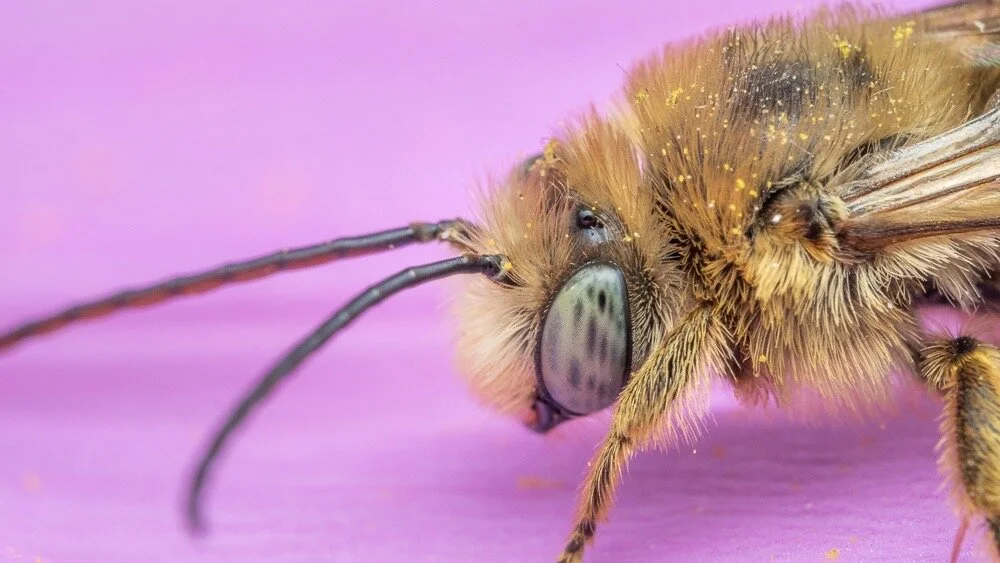Scientific Name: Melissodes spp.
Common Name: Long-horned Bees
Family: Apidae
Species Range: Widely distributed throughout the US, into Canada, and south into Mexico. These bees are found in rural and urban areas alike.
Identification Tips: Named for the males’ very long antenna, these summer bees can be found darting between flowers in the warmer months. Females are distinguished by their shorter antennae and abundant, long-haired scopae on their hind legs, used for dry-packing pollen as they collect it. Melissodes bees often have striking blue or green eyes, and both males and females are very hairy bees.

Nesting Habits: Females excavate nests in the ground, typically under shrubbery. They construct branching compartments under the ground, with each “room” containing one egg on a ball of pollen where the larvae will develop until it emerges the following season. Long-horned bees are solitary, but some species do form nesting aggregations in the soil.
Preferred Forage: Melissodes bees tend to prefer open-faced flowers from the family Asteraceae (aster, daisies, and sunflowers), but most are considered generalists. Some species are specialist pollinators of native Helianthus (sunflowers), while others play crucial roles in wildflower prairie ecology. Others still can help assist with the pollination of agricultural crops such as melon, squash, and even cotton (a self-pollinating plant).

Active Season: Most species are active from mid-summer to early fall.
Fun Fact: Male long-horned bees can be found sleeping on flowers in the early morning, often several of them together. They will hold onto flowers with their mandibles or curl up inside. It is very adorable.
